Central Auckland, East Auckland, North Auckland, South Auckland, West Auckland > Private Hospitals & Specialists >
Auckland Bone Density
Private Service, Endocrinology, Radiology
Today
Description
Auckland Bone Density was formed in 1994 by clinical, academic and research bone specialists in order to advance effective prevention and treatment of osteoporosis and the fracture complications.
Bone density measurements are used to indicate bone strength and to allow our specialists to guide programmes for referring doctors and their patients.
Auckland Bone Density uses DXA, a high technology measurement technique that is the leading research and clinical method worldwide. This allows measurements of bone density at the spine, both hips and, if necessary, the forearm and total body. Measurements for children are available. In addition, spine scans can provide images of vertebral shape for fracture detection. Total body composition studies are also available.
Consultants
Note: Please note below that some people are not available at all locations.
-
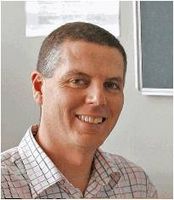
Professor Warwick Bagg
Endocrinologist
Not available on location.
-

Associate Professor Andrew Grey
Endocrinologist
Not available on location.
-
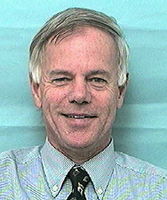
Professor Ian Holdaway
Endocrinologist
Not available on location.
-

Dr Steven Miller
Endocrinologist
Not available on location.
-
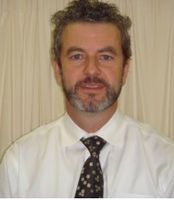
Dr Brandon Orr-Walker
Endocrinologist
Not available on location.
-
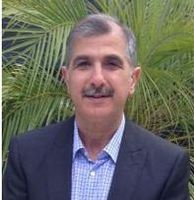
Dr Zaven Panossian
Endocrinologist
Not available on location.
-
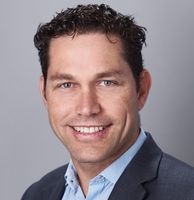
Dr Carl Peters
Endocrinologist - Associate
Not available on location.
Referral Expectations
Auckland Bone Density Referral Form
Hours
| Mon – Fri | 8:00 AM – 4:00 PM |
|---|
Please note contact Auckland Bone Density on (09) 623 2301 during the above office hours. The clinic hours vary for all locations but we arrange appointments from the Central Auckland office.
Conditions / Procedures / Treatments
Osteoporosis is a disease that weakens your bones. Osteoporosis is not painful but it makes your bones more prone to breaking (fracture). Women are more likely than men to suffer from osteoporosis and as you get older you are more likely to have it. Tests Osteoporosis can be diagnosed by measuring bone mineral density (BMD). This test involves taking x-rays or a computer tomography (CT) scan of the bones in your spine, wrist, arm or leg. You may be asked to have a blood test to look for reasons why you might have osteoporosis. Treatment There is no cure for osteoporosis, but there are treatments that can improve bone strength and reduce your chances of breaking a bone. If you are diagnosed with osteoporosis you may be prescribed several medications to improve your bone strength. You will have follow-up either with your GP or specialist to make sure that the medication suits you. You will be given some more detailed reading about things you can do to help manage your osteoporosis and about the type of medication you are on.
Osteoporosis is a disease that weakens your bones. Osteoporosis is not painful but it makes your bones more prone to breaking (fracture). Women are more likely than men to suffer from osteoporosis and as you get older you are more likely to have it. Tests Osteoporosis can be diagnosed by measuring bone mineral density (BMD). This test involves taking x-rays or a computer tomography (CT) scan of the bones in your spine, wrist, arm or leg. You may be asked to have a blood test to look for reasons why you might have osteoporosis. Treatment There is no cure for osteoporosis, but there are treatments that can improve bone strength and reduce your chances of breaking a bone. If you are diagnosed with osteoporosis you may be prescribed several medications to improve your bone strength. You will have follow-up either with your GP or specialist to make sure that the medication suits you. You will be given some more detailed reading about things you can do to help manage your osteoporosis and about the type of medication you are on.
DEXA (which stands for dual energy x-ray absorptiometry) scanning uses special x-rays to measure the density of your bones. The density of your bones will show how strong they are. The exposure to x-rays is very low and is similar to what you would receive on a long distance plane flight. What to expect? You will lie very still on a padded table for 5-10 minutes while the arm of the machine passes over the area to be measured (usually the lower spine and hip, although the forearm can also be measured). This is quite painless. You can remain in your normal clothing, although you may have to take off anything with large buttons, buckles or metal zips. Read more about your bone density test here
DEXA (which stands for dual energy x-ray absorptiometry) scanning uses special x-rays to measure the density of your bones. The density of your bones will show how strong they are. The exposure to x-rays is very low and is similar to what you would receive on a long distance plane flight. What to expect? You will lie very still on a padded table for 5-10 minutes while the arm of the machine passes over the area to be measured (usually the lower spine and hip, although the forearm can also be measured). This is quite painless. You can remain in your normal clothing, although you may have to take off anything with large buttons, buckles or metal zips. Read more about your bone density test here
DEXA (which stands for dual energy x-ray absorptiometry) scanning uses special x-rays to measure the density of your bones. The density of your bones will show how strong they are. The exposure to x-rays is very low and is similar to what you would receive on a long distance plane flight.
What to expect?
You will lie very still on a padded table for 5-10 minutes while the arm of the machine passes over the area to be measured (usually the lower spine and hip, although the forearm can also be measured). This is quite painless.
You can remain in your normal clothing, although you may have to take off anything with large buttons, buckles or metal zips.
Read more about your bone density test here
Public Transport
The Auckland Transport website is a good resource to plan your public transport options.
Parking
Mercy Specialist Centre: parking is usually available behind Mercy Hospital (off Almorah Road).
Apollo Centre: parking is available on both sides (Rosedale Road and Apollo Drive) of the building.
Henderson: plenty of parking is available.
Takapuna: there is plenty of parking in front of the building and down the side.
Eastcare: parking is not a problem as there is a large carpark.
Other
Newsletters: Click here
Website
Contact Details
Eastcare, 260 Botany Road, Golflands, Auckland
East Auckland
-
Phone
(09) 623 2301
Healthlink EDI
akldbone
Email
Website
Use the numbers above for appointments at all locations.
Mercy Radiology
Ground Floor
Eastcare Specialist Centre
260 Botany Rd
Botany Downs
Howick
Street Address
Mercy Radiology
Ground Floor
Eastcare Specialist Centre
260 Botany Rd
Botany Downs
Howick
Postal Address
Auckland Bone Densitometry
Mercy Specialist Centre
100 Mountain Road
Epsom
Auckland 1023
Mercy Specialist Centre, 100 Mountain Road, Epsom, Auckland
Central Auckland
-
Phone
(09) 623 2301
Healthlink EDI
akldbone
Email
Website
Apollo Health & Wellness, 119 Apollo Drive, Rosedale, Auckland
North Auckland
-
Phone
(09) 623 2301
Healthlink EDI
akldbone
Email
Website
199 Lincoln Road, Henderson, Auckland
West Auckland
-
Phone
(09) 623 2301
Healthlink EDI
akldbone
Email
Website
50 East Coast Road, Milford, Auckland
North Auckland
-
Phone
(09) 623 2301
Healthlink EDI
akldbone
Email
Website
Was this page helpful?
This page was last updated at 8:43AM on March 7, 2024. This information is reviewed and edited by Auckland Bone Density.

